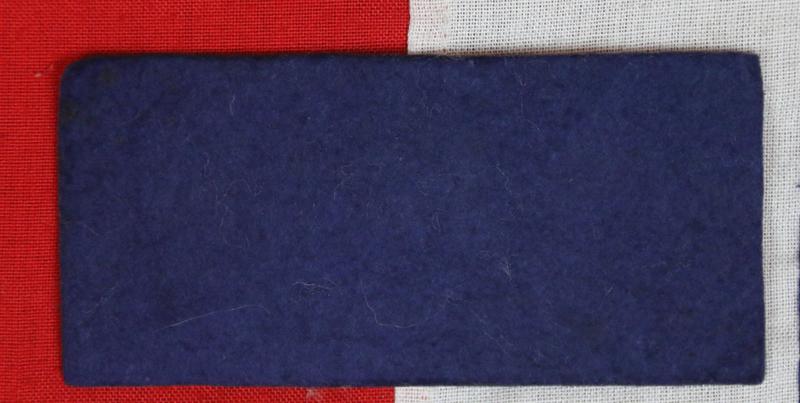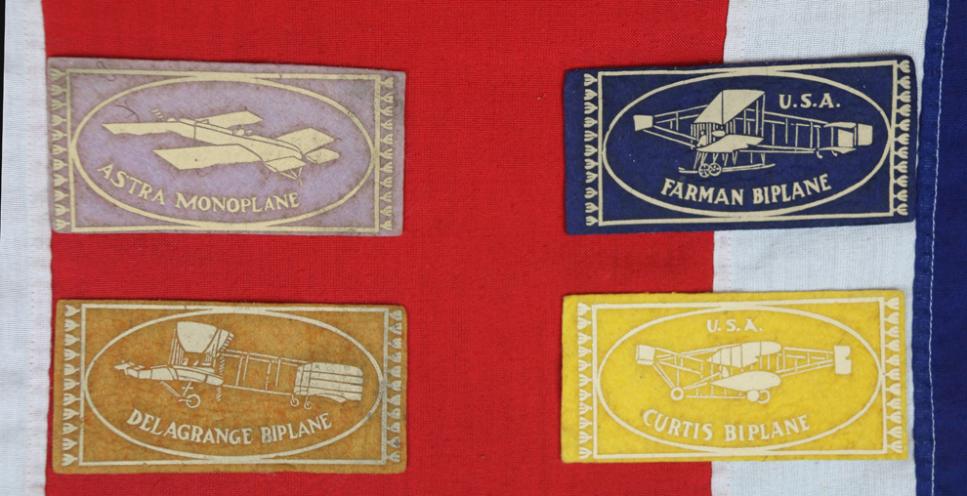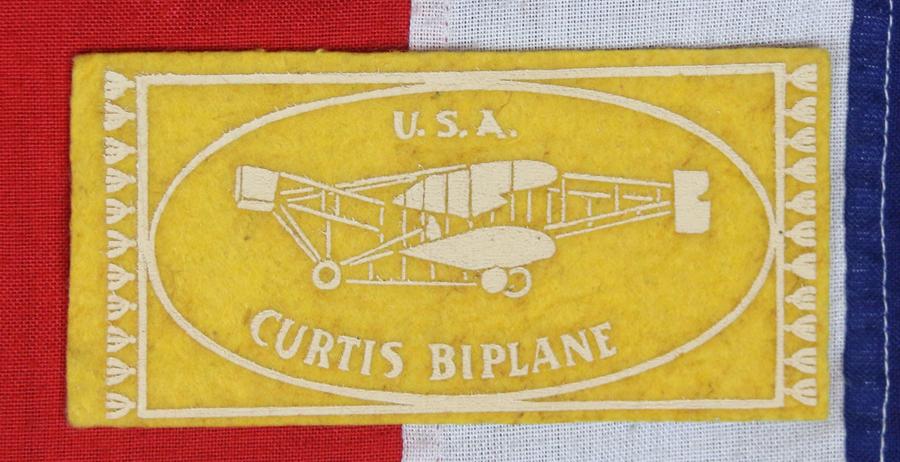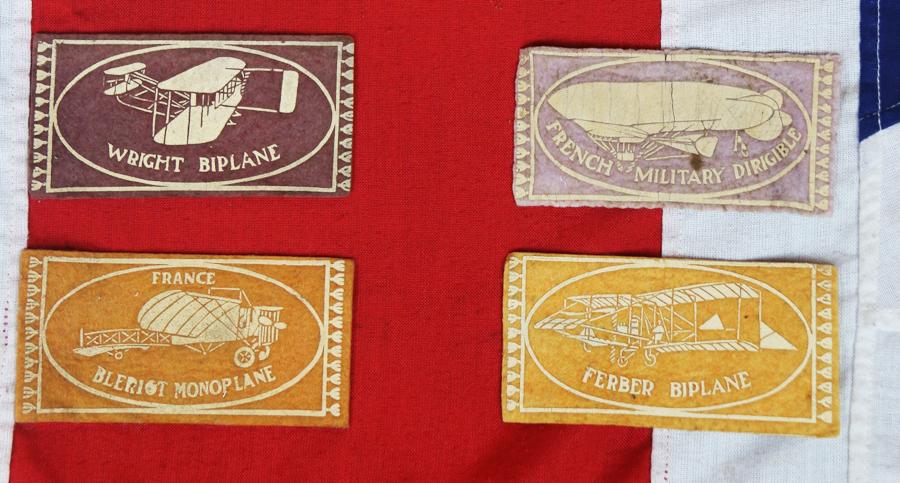A Very Rare Original,1930's Aeronautical Collection of Wide, Wool Felt, Sleeve Patches for Early Airships & Aeroplanes
Shoulder sleeve insignia. For the Farman Biplane USA, Astra Monoplane, Curtis Biplane USA, Delagrange Biplane, Ferber Biplane, Bleriot Monoplane, French Military Dirigible, Wright Biplane, Reid-Curtis Flying Boat USA, and the Mengin Monoplane.
In the early 20th century US military the 81st Infantry Division "Wildcat" is generally agreed to have been first U.S. Army unit authorised shoulder sleeve insignia or SSI. In 1918, during World War I, the 81st Division sailed for France after training at Fort Jackson, South Carolina. On their left shoulder the men of the division wore an olive drab felt patch with the silhouette of a wildcat - after Wildcat Creek, a stream that flows through Fort Jackson. When men of the other fighting divisions challenged the right of 81st soldiers to wear the patch, General John J. Pershing ruled that the 81st could keep this distinctive insignia. He also suggested that other divisions adopt shoulder patches of their own. This patch was officially adopted by the U.S. Army on October 19, 1918. The first patches were often primitive but by World War II, the manufacture was regulated.
By World War II, all army groups, field armies, corps, and divisions, as well as all major Army commands, had unique SSI. These SSI would often be created with symbolism alluding to the unit's formation. Examples include the 82nd Airborne Division, which included an "AA" on its patch alluding to the "All-American" soldiers from every state that made it up, and the 29th Infantry Division, which included blue and grey to allude to soldiers that made it up being from states on both sides of the American Civil War.
Most US formations had unique patches which varied greatly in size and makeup, with the exception of U.S. armoured divisions (as well as 1st Armoured Corps and the U.S. Army Armour Center & School), all of which adopted the same patch (a yellow, red and blue triangle with a symbol for armour in the middle). Each division and I Armoured Corps then included its number in the upper yellow portion of the patch to distinguish it. The SSIs of those armoured units which survived into the Cold War became irregular pentagons (some units later than others) with the addition of rectangular section at the bottom, bearing the division's nickname or "U.S. Army Armour Centre". In the past we have individual examples sell for a few hundred pounds, but we have never seen a complete, or near complete, set of 10 before. They would look stunning bespoke framed. Wide sleeve type patches, approx 6 x 3 inches.
Code: 23859
1495.00 GBP







